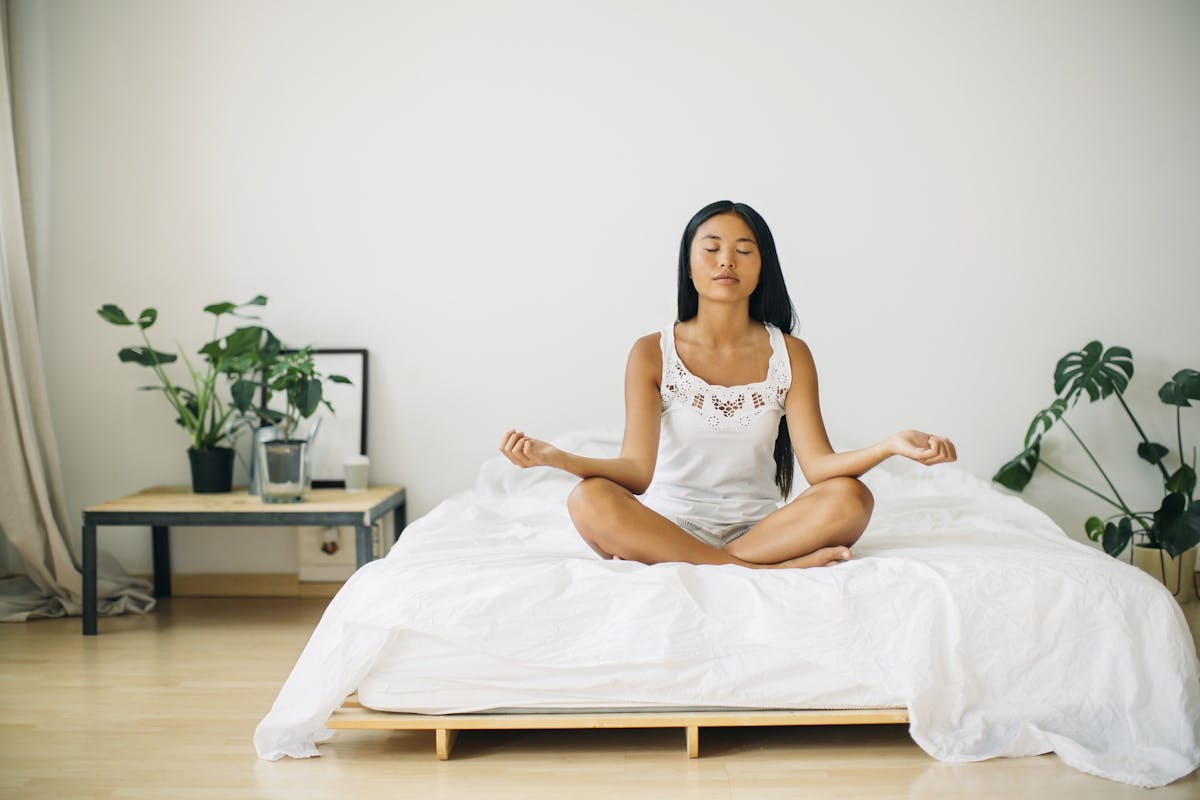Who is stressed? Raise your hand! Yeah… that’s what we thought — pretty much everyone. The question probably should have been, “Who isn’t stressed?!”
How To Meditate For Stress Relief & Inner Calm
Lifestyle
8 Min Read

Get hair, health, and science news delivered right to your inbox.
It may seem like there is no shortage of stressors coming at you. Sometimes it even feels like they’re all hitting you at once. When life comes bearing down on, how does one rise above it all to achieve zen and balance? Try meditation. Often perceived as an intimidating practice, meditation is actually anything but.
What is the point of meditation?
Originated in the ancient Vedic times of India, meditation has a long-standing history. Today, the term “meditation” encompasses a number of varied techniques and practices. It has been thought of as a set of strategies to assist with things like emotional balance and well-being. Meditation can be breathing exercises, movements like tai chi or yoga, concentration, a mantra, guided, or even the utilization of the sounds of nature, like the ocean. No matter the method, meditation works to involve many aspects of the self, including intellect, senses, emotions, and mind. Vedic science describes meditation’s true and innate purpose as “to connect oneself to one’s deep inner self,” and through these techniques, meditation’s true objective is obtained and accomplished.

How do you properly meditate?
There are many ways to “properly” meditate, depending on the type of meditation you are performing. If you are a novice and want to begin your practice today, Mindful.org has a step-by-step guide on “How to Meditate Properly” regarding a basic breathing meditation. It also includes some complementary meditations you can play right off your computer that are one minute, 10 minutes, or 15 minutes in length. The site provides information on additional meditation techniques as well. Another guide you may want to check out is the Chopra Center’s “Learn to Meditate in 6 Steps,” which lists easy steps for starting a mantra meditation. Give those a try to get started and learn how to meditate.
How do you meditate in bed?
Meditation can be conducted sitting up in a chair or laying down, but when the floor isn’t a comfy or viable option, the bed is usually a very comfortable place to be. Several types of meditation can be practiced in bed: breathing exercises, mindfulness, a mantra — you name it. There are CDs, DVDs, or apps on your phone that you can download which have these meditations ready-to-go for you. Try out a few different kinds of meditations to see which one best suits you.
What do you think of when you meditate?
Especially when you’re a beginner, the mind can often wander during meditation. You might catch yourself thinking about a variety of things. The mind can, and oftentimes will, go in a number of directions. If you become distracted during meditation, practice the art of forgiveness. Accept and acknowledge that your mind wandered, take that deep breath, and continue on your meditative path. The more you make meditation a daily practice, the less likely your mind will wander over time.
The link between meditation and hair health
If stress negatively affects a healthy hair growth cycle, and meditation helps manage stress, could meditation be helpful for hair health? For several people, the answer is yes. A study of 31 males between 17 and 32 years old utilized meditation as a component of androgenic alopecia (male pattern baldness) treatment. Of the 31 participants, 16 of them were provided with CDs that had the “Om” sound meditation mantra on them. These participants were asked to practice meditation twice per day for 15 minutes each. The six-month follow-up showed fascinating results: The study found that the individuals who did the meditation as part of their treatment reported they found a greater willingness and balance in everyday tasks along with a reduction in hair loss. They additionally found their hair appearance improved. Interestingly, the study concluded that meditation was not only important for reducing stress levels but also for achieving better results in androgenic alopecia treatment.
When it comes to meditation, it’s never too late to start and you’re never too old to be a beginner. Keep in mind, meditation is a practice; it’s not something that is generally perfected overnight. But with time and repetition, the benefits associated with meditation can grow and blossom. So go ahead and give meditating a try. You deserve it.